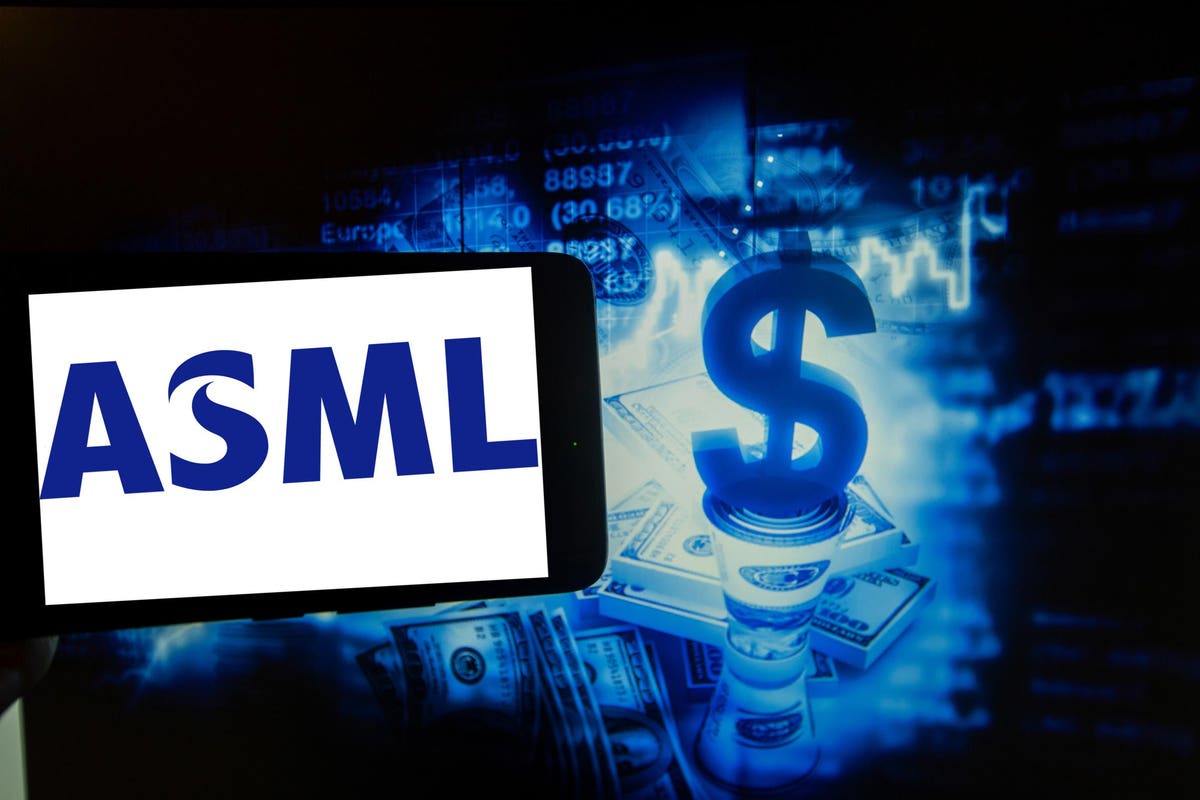Semiconductor investors are wrong to worry about rising geopolitical tensions. De-globalization and energy transition will be a boon for the chip sector.
According to the Investor Day presentation published in November, business is booming at ASML Holding NV (ASML), the Dutch company that makes machines that make semiconductors.
Investors should buy semiconductor equipment stocks into the next pullback.
This is an unpopular opinion. Many investors are convinced that the semiconductor sector faces a glut of supply. Investors are conflating chip supply for mature markets such as personal computers, smartphones, and other devices, with demand from next generation marketplaces surrounding hyperconnectivity. More importantly, they are missing the multiplying effect of de-globalization and energy transition.
For the better part of the last three decades Western companies have been busy offshoring production capacity to China and other countries in Southeast Asia. The most important concentration came in the semiconductor sector. Two firms, Taiwan Semiconductor (TSM) and Samsung Electronics in 2021 controlled 70% of the world’s manufacturing capacity.
The folly of this strategy became apparent in 2021 as the pandemic began to subside. Covid-19 restrictions at shipping ports caused massive bottlenecks in the supply chain. Factories worldwide were crippled with chip shortages. Politicians everywhere began to talk about so-called technological sovereignty. Bipartisan legislation followed.
Globalization had gone awry. De-globalization gained traction.
The United States Congress passed the CHIPS Act and FABS Act, legislation worth $52 billion in new spending for domestic chip fabrication. Europeans will spend $46 billion on their CHIPS Act. Korean legislators aim to attract $450 billion in private investment. Japan has set up subsidies for $4.4 billion. The Invest Taiwan Initiative is allocating tax credits to help secure addition land, water and electricity for chip fabricators. And the Chinese Integrated Circuit Industry Investment Fund will allocate tax breaks worth a combined $51.2 billion.
A huge amount of public capital is being deployed to ensure unobstructed, regional access to microchips. However, even with the new capacity demand is likely to outstrip supply into 2030, according the ASML Investor Day presentation.
There is good reason. The world is changing fast. Semiconductors are integral to future infrastructure.
The Russian war in Ukraine is exploding energy costs. A scarcity of fossil fuels, and environmental concerns is pushing world leaders to accelerate energy transition. This includes a faster ramp up of wind and solar power projects. And by 2030 70% of new car sales are expected to be electric vehicles, up from approximately 15% in 2021. EVs use twice as many semiconductors as internal combustion engine vehicles. That is only half of the story.
EVs, and the charging infrastructure that is required, also use the entire gamut of chip architectures, from older 40nm chips found in electric actuators, to 16nm nodes found in communication gateways and infotainment, to the advanced 5nm chips used for real-time processing.
Analysts at McKinsey and Co. expect overall demand for chips in 2030 will reach a range of $1 trillion to $1.3 trillion, about double the current level.
Gartner researchers believe automotive, datacenter, and industrial applications will grow fastest during that timeframe, with grow rates of 14%, 13%, and 12% respectively. The slowest part of the growth curve is PCs, the persistent focus of bearish semiconductor investors.
I’m not surprised that bearish voices have been able to distort the semiconductor story. Narratives, especially noisy, apocalyptic ones drive stock prices. It’s easy to tell the story that the pandemic pulled forward PC demand, and now there is a glut of the chips that power those devices. However, this narrative misses the semiconductor megatrend: As more devices connect to networks, chip demand will only grow.
ASML executives should know. They are at ground zero. They make the machines that make the chips.
Investors should focus on these chip equipment firms. ASML Holding, KLA Corp. (KLAC), and Lam Research (LRCX) shares are buyable on 10% pullbacks.
The bottom line is investors are getting the longer-term chip story all wrong. Near term macroeconomic concerns aside, the outlook for the sector has never been brighter.
Investing can be intimidating, but it doesn’t have to be. Let us be your guide to profitable investing with our Strategic Advantage newsletter. Join us for a $1 trial and see for yourself!
Read the full article here












